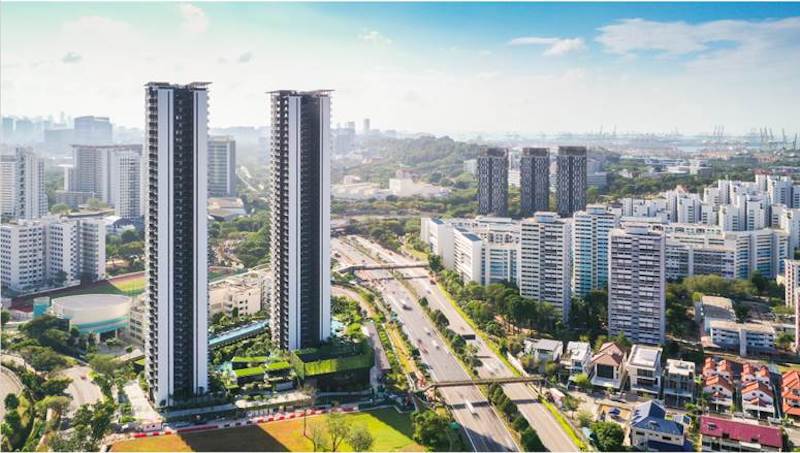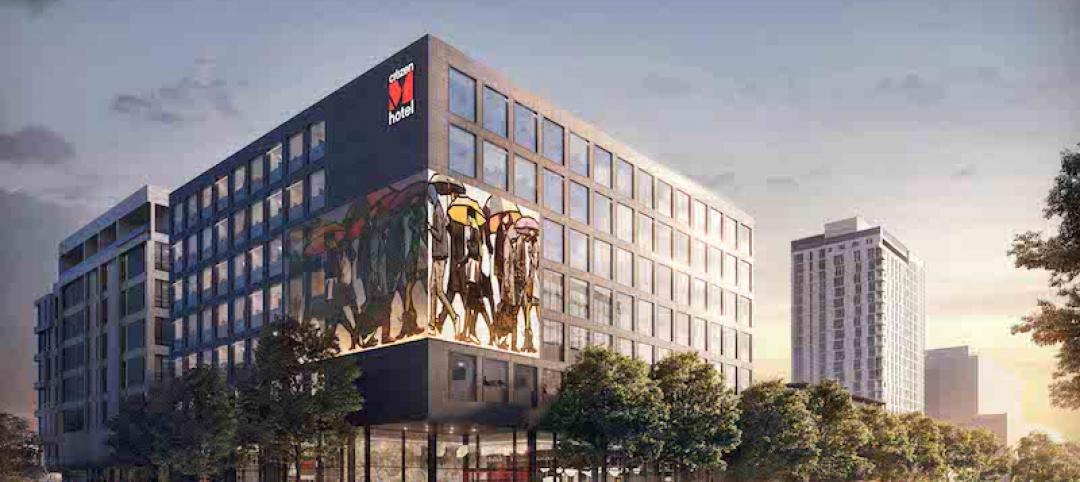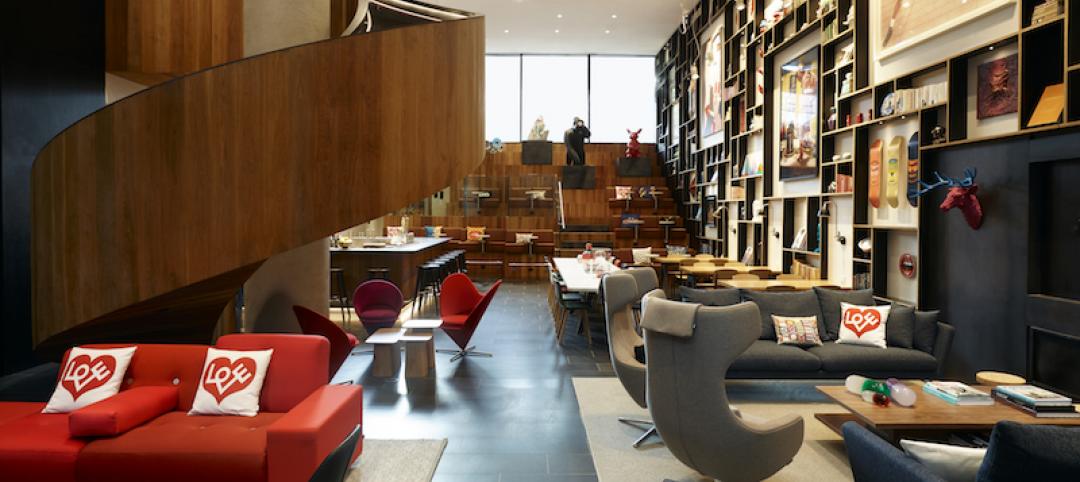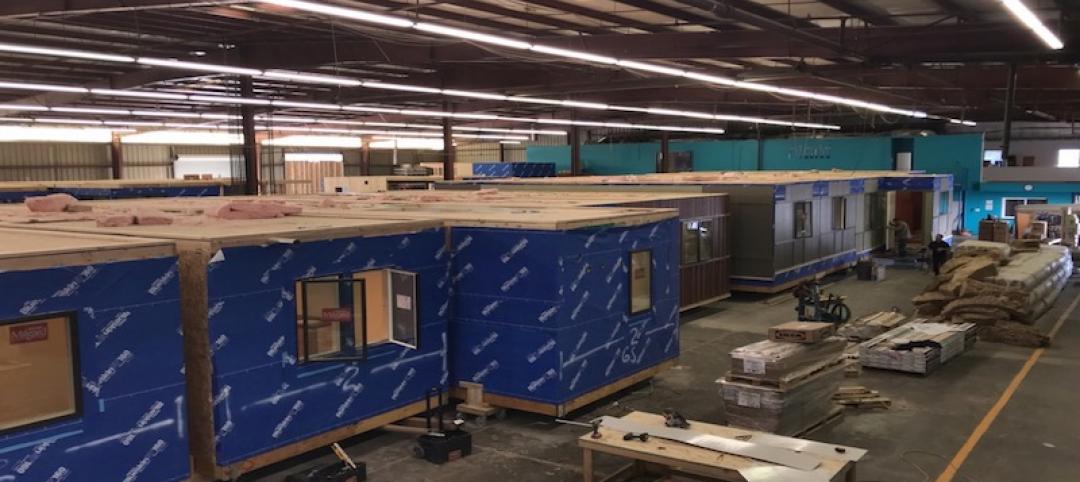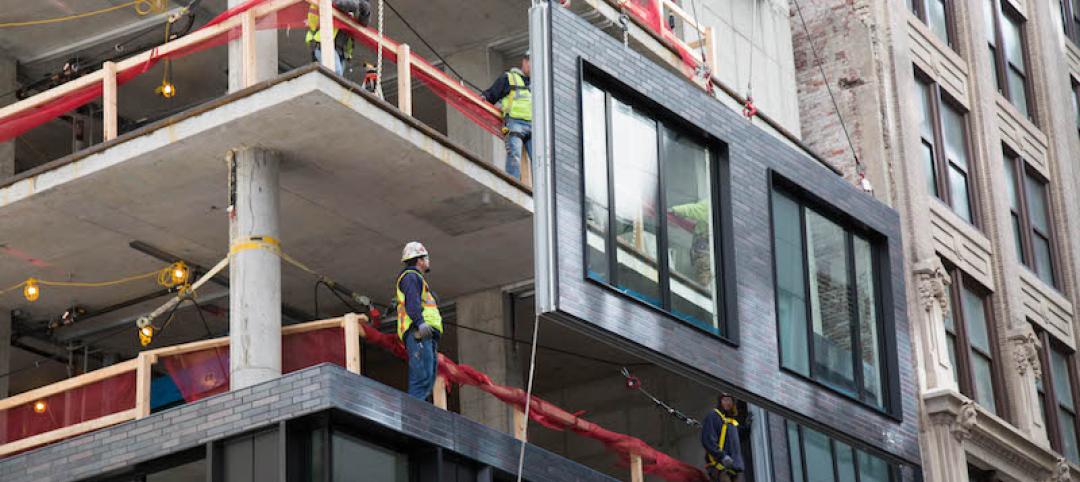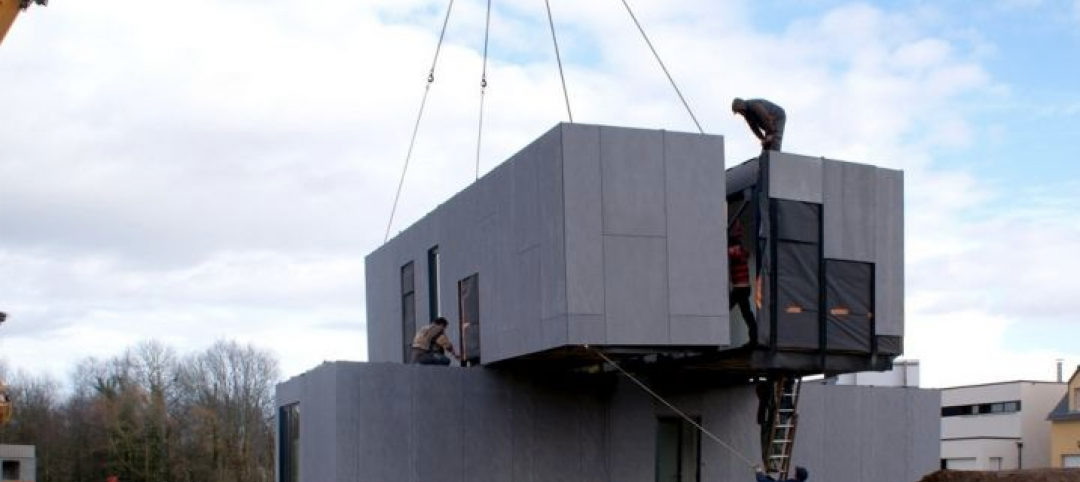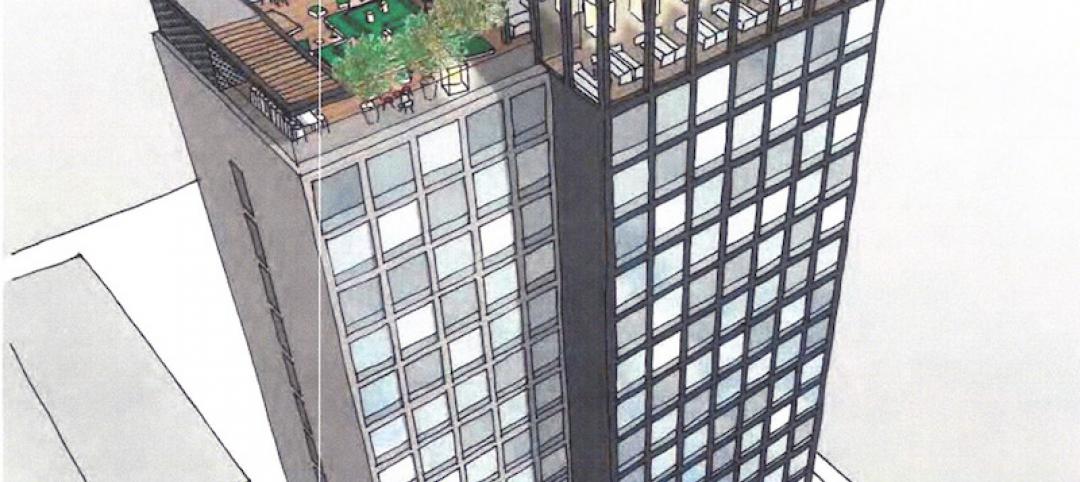Last week, construction of the world’s tallest modular buildings was completed in Singapore.
The Clement Canopy building consists of two 40-story towers with 505 luxury apartments, located in the heart of this city’s residential and Kent Ridge Education Belt districts. Each tower is 459 ft tall, and combined they are made up of 1,899 modules whose weight ranged from 37,000 to 64,000 lbs.
UOL Group, a leading real estate and property management firm in Singapore, is the project’s client as part of a development joint venture with Singland Homes. ADDP Architects was the project's architect.
Clement Canopy is the first structure on the island to use an all-concrete version of the Prefabricated Prefinished Volumetric Construction (PPVC) system, where freestanding modules, complete with finishes for walls, floors, and ceilings, are produced offsite and then assembled onsite, according to Concrete Construction magazine.
In April 2016, the Singapore government awarded Dragages Singapore, a subsidiary of France-based general contractor Bouygues Bâtiment International, the contract to design and build Clement Canopy. Aurélie Cleraux, Bouygues Bâtiment’s head of modular construction, tells BD+C that more than 60% of the two towers’ superstructure was built offsite. The modules were cast by a concrete precast manufacturer in Senei, Malaysia, in five days. (The project required a total of 48 module shapes.) The fitouts were completed in the contractor’s factory in Tuas, Singapore, within 15 days. The modules included mechanicals and plumbing, plastering, painting, and bathroom fixtures and tiles.
The contractor used two Liebherr 1000 EC-H 40 Litronic High-Top tower cranes to erect the towers. The Clement Canopy project was delivered in 30 months, six months ahead of its initial timeline. Cleraux says most of this period was spent in designing and planning.
Cleraux explains that there’s a big push by the Singapore government to improve construction productivity. And the benefits of modular and prefabrication processes, he says, are that they can reduce construction time by up to 50%, and reduce onsite labor by 30%. Other benefits include reduction of jobsite noise, pollution and neighborhood disruption; improvements in jobsite safety and the quality of the finished product, as well as the possible reuse of the building’s materials down the road.
In February 2018, Dragages Singapore won a €13 million ($9.6 million) contract to build six more 15-story residential buildings in Singapore whose reinforced concrete structures will be 65% factory built.
“We are going to see a complete disruption in the next few years: our clients expect ever more efficient and faster building solutions,” Nicolas Borit, CEO of Bouygues Bâtiment International, told Global Construction Review last year. “Through the experience we have acquired on a number of projects, we are able to provide modular construction solutions today which fully meet their expectations, from design through to the construction of the final product.”
These six buildings were expected to take 33 months to complete.
Related Stories
Modular Building | Oct 31, 2018
Europe’s citizenM is trying to crack into the U.S. hotel market with steel-framed modular construction
Projects in several cities are in various stages of development.
Modular Building | Oct 12, 2018
DeSimone Consulting Engineers designs the tallest modular hotel in the United States
The hotel was originally designed as a cast-in-place concrete structure.
Modular Building | Sep 25, 2018
Amazon invests in a prefab module supplier
Los Angeles-based Plant Prefab targets single- and multifamily construction.
Modular Building | Aug 6, 2018
More contractors are turning to offsite production for speed and quality
Skender launches an advanced manufacturing division. Katerra ups its bet on modular. Prefabrication comes to the rescue on multiple projects.
Modular Building | Aug 2, 2018
Educare Center in Long Beach uses modular construction to cut costs without sacrificing space or amenities
Dougherty was the Architect-of-Record.
Modular Building | Jul 23, 2018
Offsite construction: Why it’s important for the survival of your firm
The industry is approaching its “heart attack moment,” with so many large projects that are chronically late, over budget, and unprofitable, writes FMI Capital Advisors’ Michael Swistun.
| May 30, 2018
Accelerate Live! talk: An AEC giant’s roadmap for integrating design, manufacturing, and construction
In this 15-minute talk at BD+C’s Accelerate Live! conference (May 10, 2018, Chicago), Skender CEO Mark Skender and Chief Design Officer Tim Swanson present the construction giant’s vision for creating a manufacturing-minded, vertically-integrated design-manufacturing-build business model.
| May 30, 2018
Accelerate Live! talk: From micro schools to tiny houses: What’s driving the downsizing economy?
In this 15-minute talk at BD+C’s Accelerate Live! conference (May 10, 2018, Chicago), micro-buildings design expert Aeron Hodges, AIA, explores the key drivers of the micro-buildings movement, and how the trend is spreading into a wide variety of building typologies.
Modular Building | Jan 12, 2017
The largest modular construction hotel project in New York City is starting to get pieced together
The hotel’s 300 rooms are made from 210 prefabricated pods from Polcom Modular.
Building Materials | Jan 9, 2017
Architects and researchers are developing new techniques for building in space
As setting foot on Mars becomes a more realistic goal, the search for how to best develop Architecture for the Red Planet is heating up.


